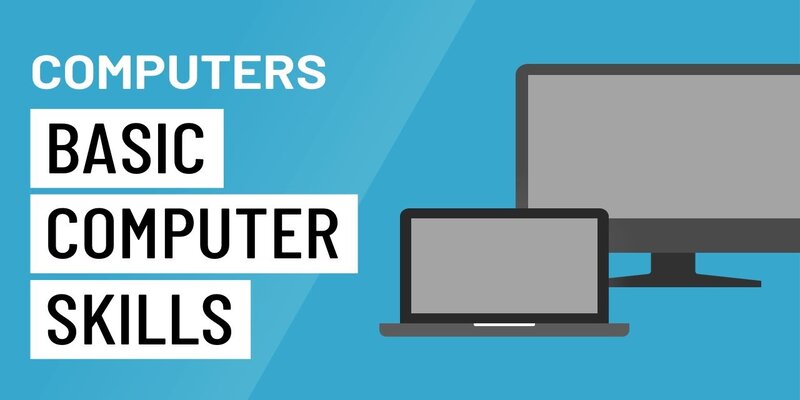Read the article on basic computer knowledge that is provided below. While reading, get points for your general computer knowledge to help you perform better on tests. We give you information on the specific computer knowledge questions that are asked in all competitive tests. To help you better understand computer expertise, we’ve included information on memory specifics, software details, input and output details, and computer generations.
What is a Computer?
A computer is a general-purpose device that, under the direction of a set of instructions known as a programme, accepts (inputs), stores, manipulates, and produces (outputs) data in the form of numbers, text, images, voice files, video files, or electrical signals.
Desktop Computers
- Design-wise, desktop computers are intended to be used at a desk or table.
- Compared to other forms of personal computers, they are often bigger and more powerful.
- The primary component, referred to as the system unit, typically takes up space beneath or on top of a desk.
- The system unit is connected to additional parts such the keyboard, mouse, and display.
Laptops
- The laptops are small, mobile computers with narrow screens.
- Because laptops run on batteries, you can take them everywhere you go.
- Laptops combine the CPU, screen, and keyboard in one chassis, in contrast to desktop computers.
- When not in use, the screen collapses onto the keyboard.
Handheld computers (PDA)
- Personal digital assistants (PDAs), usually referred to as handheld computers, are battery-operated computers that are portable enough to be carried practically anywhere.
- These can particularly handy for playing games, keeping track of addresses and phone numbers, and arranging appointments.
- Some have sophisticated features, like the ability to call or use the Internet.
- Handheld computers lack keyboards in favour of finger-operated touch screens.
Peripheral Devices
- To add functionality, the peripheral device is connected to a computer system. A mouse, keyboard, monitor, printer, and scanner are a few examples.
- A device that connects to a computer but is not a fundamental component of the computer architecture is known as a computer peripheral.
- The central processor unit, power supply, motherboard, and computer chassis housing those three parts make up a computer’s basic building blocks.
Types of Peripheral Devices
There are numerous peripheral devices, however they can be divided into three main groups:
- input devices like a keyboard and mouse
- output devices, including a printer and a monitor
- Hard drives and flash drives are examples of storage devices.
Hardware
- The computer chassis, monitor, keyboard, and mouse are all examples of actual computer hardware.
- It also comprises all of the components found inside the computer case, including the motherboard, video card, hard drive, and numerous more components.
Input Devices
An input device is a peripheral (i.e., a piece of computer hardware) in computing that sends data and control signals to a system for processing information.
- Devices like a computer or information appliance will be under its control.
- Keyboards, mice, scanners, digital cameras, and joysticks are a few examples.
Keyboard
- The most basic input device for every computer system is a keyboard.
- Data entry on a computer is useful.
Mouse
- The left mouse button is used to select items and send a signal to the computer while using a mouse to enter data.
- The “enter” button is located on the left mouse. Selecting the right mouse button will frequently open a menu of options.
- The view of the screen can be moved up or down using the scrolling wheel.
- You can position the pointer by dragging the mouse to a specific spot in a document, on a digital photo, or over a piece of music.
Trackballs
- To input motion data into computers or other electronic devices, a trackball is employed.
- It accomplishes the same task as a mouse but differs in that it has a top-mounted moveable ball that can be rolled in any direction.
- Simply roll the moveable ball on top of the trackball unit with your hand to provide motion input instead of moving the entire device.
Systems Software
- Programs that are specifically designed to administer a computer, such as the operating system, file management tools, and disc operating system, are referred to as systems software (or DOS).
- In addition to controlling software and data, the operating system also controls the hardware resources of the machine.
- We would have to input the commands for everything we wanted the computer to do if it didn’t have systems software installed.
Applications Software
- Applications, also known as application software or software for users, are frequently referred to as productivity programmes.
- By using them, the user will be able to carry out duties like making publications, spreadsheets, databases, and papers, conducting internet research, sending emails, designing graphics, managing enterprises, and even playing games.
- Application software, which can be as straightforward as a calculator application or as complicated as a word processing application, is tailored to the purpose.
- The margins, font style, and line spacing are already configured for you by the word processing programme when you start writing a document.
- For instance, the word processing programme makes it simple to add colour, headings, and photos, as well as to delete, copy, relocate, and alter the appearance of the document to fit your demands.

